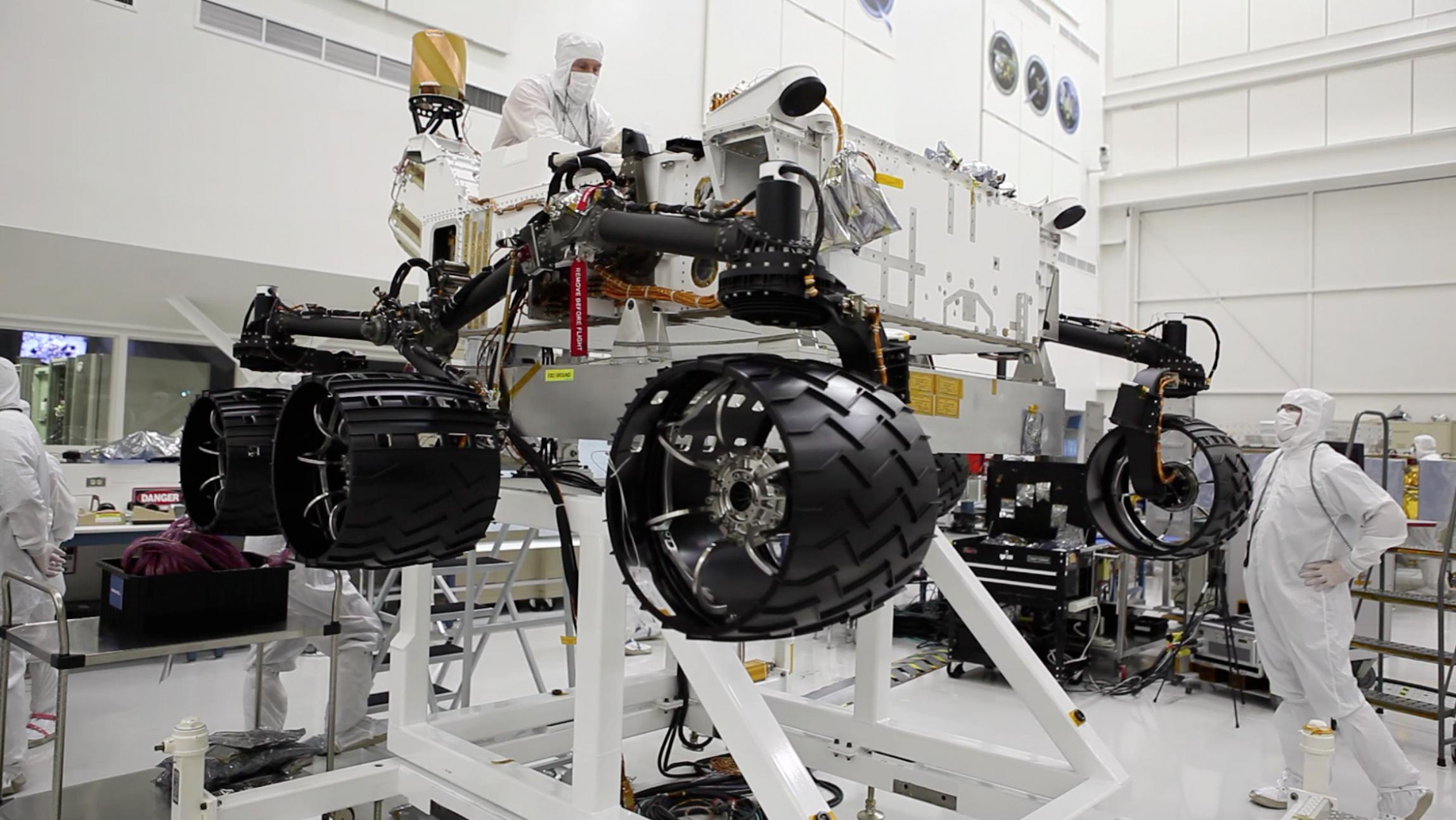
Opportunity Rover which also called MER-B or MER-1 (Mars Exploration Rover-B) was a robotic car made by NASA which was sent to the distant Mars for exploring the Gale Crater. The mission goals of Opportunity Rover was to investigate the martian climate and geology of the planet, also to study the environmental condition and microbial life whether it is life habitable or not.
It was active from 2004 to late 2018. It stopped responded from 12 June, 2018 due to planetary storm. Now, Oppy will be just a history in planetary mission. So, everyone should know about it.
Launch:
Opportunity/curiosity rover was launched in July 9, 2003 with the Delta II Heavy rocket. It was a part of Mars Exploration Rover program. At first,it was planned to launch in June 28, 2003, but due to some problems like range safety, winds and some replacement of insulation and battery; the launch was delayed to July 9, 2003.
On Jan 25, 2004, the opportunity rover landed in Meridiani Planum ( it is a plain which is located 2 degrees south of equator of Mars). After three weeks later, its twin rover Spirit which was also called MER-A landed on the other side of Mars.
Overview:
Under the part of Mars Exploration Rover program, both the Opportunity and Spirit rovers were prepared for the mission. The primary goals of Mars Exploration program were-
- To check whether the potential life is possible to exist on Mars.
- To characterise the climate and geology of Mars.
- To prepare a human mission to Mars.
Like that, Opportunity Rover also survived 55 times longer than expected. It stops responding from 10 June and hibernated on June 12, 2018. It has been assumed that this happened due to either catastrophic failure or dust of planetary storm covered the surfaces of the solar panels. Thus, on June 13, 2019, the mission was declared to be completed.
Construction of the rover:
Both the rovers "Opportunity" and "Spirit" were consisted of six wheels and solar panels which made them solar powered vehicle. The dimensions of the rovers were 1.5 X 2.3 X 1.6 meters and weighing 180 kilograms. The rover was designed to operate safely at tilts of up to of 30 degrees. Its maximum velocity was 5 cm per second, but average velocity was about 0.89 cm per second.
It was powered by rechargeable lithium ion batteries, however the arrays of solar panels generate 140 watts. Its onboard computer uses 20 MHz RAD6000 CPU which consists of 128 MB of DRAM (Dynamic Random Access Memory), 3 MB of EEPROM (Electrically Erasable Programmable Read Only Memory) and 256 MB of flash memory. The operating temperature of the rover lies in the range of -40 to +40 °C; also it uses RHU (Radioisotope Heater Unit) for external heating.
Besides these, some scientific instruments were also attached on it like- Panoramic camera (Pancam), Navigation Camera (Navcam), Miniature Thermal Emission Spectrometer (Mini-TES), Hazcams, Mossbauer Spectrometer MIMOS II, Alpha Particle X-Ray Spectrometer (APXS), magnets, Microscopic Imager (MI), Rock Abrasion Tool (RAT) etc.
Exploration:
- The Opportunity Rover landed on Impact Crater, which was at almost 25 km away from the targeted area.
- After landing, it started to investigate the soils and rock samples and also took some photographs of them. By studying those photographs, scientists assumed presence of hematite (Fe2O3) and past presence of water on the surface of Mars.
- From June to December 2004, it continued its journey towards the Endurance Crater.
- It discovered a meteorite which is now known as Heat Shield Rock during the study of its own heat shield.
- In the late September 2006, the Opportunity Rover reached Victoria Crater along the rim of its clockwise direction.
- At the rim of Endeavour Crater, it moved around a geographic feature which was named as Cape York. The MRO (Mars Reconnaissance Orbiter) detected Phyllosilicates in there; then the rover analysed those samples with its instruments. After that, the rover headed to Solander Point.
End of Journey:
In June 2018, a planetary dust storm developed in the surface of the Mars and the solar panels were not generating sufficient power for maintaining communication with earth's station. The rover did not respond even after the storm had ended in early October. It was assumed that there may be catastrophic failure or dust covered in the solar panels of the rover. The team is now hopeful that in about November 2018, windy period will begin and it might clear the surface of the solar panels of the rover. If this happens, the rover will start again. But for now, the NASA scientists have been declared official ending of the mission.
This will be a great mission of mankind. With the help of Spirit and Opportunity rover, the scientists came to know those truths of Mars which might not be possible to reveal without them. The mankind will remember them forever.
Good Bye Oppy..











0 Comments
Please do not enter any spam link in the comment box..